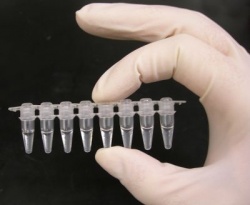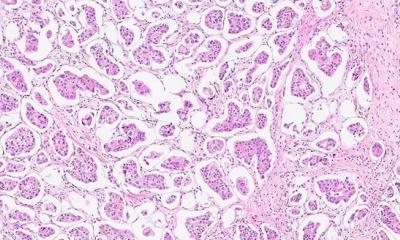The value and development of PCR tests
Whereas, in the past, the diagnoses of infectious diseases focused on antibody detection, more recently laboratories aim to identify the agent itself, using the invaluable PCR (polymerase chain reaction) test. We asked Prof Beatus Ofenloch-Hähnle, head of Reagent and System Development Immunology, at Roche Professional Diagnostics, and Benjamin Lilienfeld, Global Product Manager for Infectious Diseases at Roche Diagnostics, why further development of PCR tests is necessary.

‘Since the discovery of the hepatitis C virus, diagnostic procedures have become increasingly sensitive so that the “diagnostic window” between virus infection and antibody formation has decreased steadily in recent years,’ explained Benjamin Lilienfeld. ‘In addition to these, more sensitive antibody tests -- the PCR test -- was developed,
which today is the fastest method to detect an infection in the body. This development also has had an impact on therapy, the success of which has now become measurable thanks to PCR tests. Despite these successes we continue to work on the test’s sensitivity to be able to identify the smallest possible quantity of the virus in the future.
This becomes more important for future therapy options that are currently being investigated. We can already determine the genotype for hepatitis C and thus determine the appropriate duration of therapy and
pharmacological concentration. In coming years, new, potent anti-viral medicines will be launched. These are polymerase inhibitors that supplement the therapy with pegasys and ribavirin.
To prove the therapy’s effectiveness and distinguish it from others, we need to be able to recognise the slightest deviation in the virus quantity.’ Dr Ofenloch- Hähnle added: ‘The challenges for diagnostics are manifold. First,
there is the sensitivity mentioned, in order to further increase the test’s accuracy; then there is, of course, the specificity. Our aim is to reduce false positive diagnoses to a minimum, because every incorrect result leads to unnecessary hospital costs. Another area is the automation of current testing processes – the application to analysis systems so as to enable more efficient and costeffective handling.
‘We also continue to study new agents, respectively mutations. This identification of all basic types and their mutations is primarily a technological challenge. Molecular biology helps us with tools such as protein design, a procedure that allows us to modify the sequences in such a way that sub-types can also be recognised. At the same time, we can create protein compounds for stabilisation purposes so that they can be used in mechanical test processes. This all means that, today, we can develop new diagnostic tests at a speed that was unimaginable a few years ago.
‘One of the most important research fields arises from the PHC sector and involves quantification, which is now possible with the PCR test and which is decisive for monitoring therapy. We have to move from purely qualitative to quantitative tests with a sensitivity in the magnitude of 107. Quantification, as such, is not new for the laboratory. Our work entails transferring the experience from endocrinology or oncology to infections. One example of these new developments involves hepatitis B therapy monitoring. There are situations when the virus is active but only in the liver. The liver produces a quasi-capsule for the virus, which is passed into the blood. New tests can detect these capsules and thus serve as a more reliable indicator than the genome.’
As far as hepatitis B therapy is concerned, said Benjamin Lilienfeld, ‘In the future we will closely monitor patients treated with peginter-feron alpha-2a. Our aim is to predict whether a patient will respondto the therapy and then to treat such targeted patient groups with greater chances of success. In a second stage, this concept will be transferred to the oral anti-viral medicines. This development is still just beyond its infancy, but we are making definite progress.'
26.01.2010











